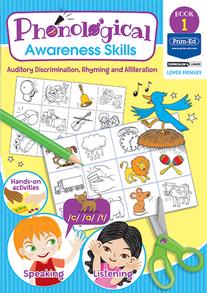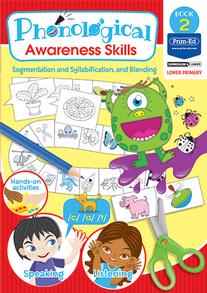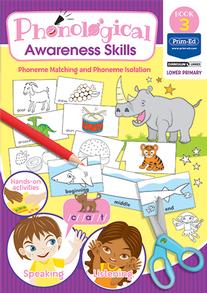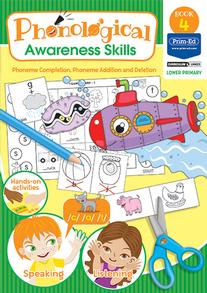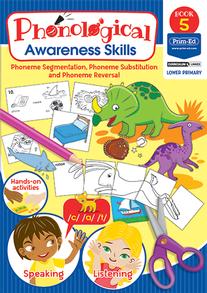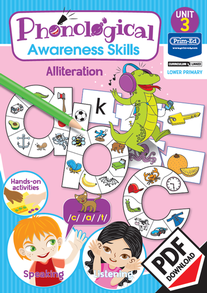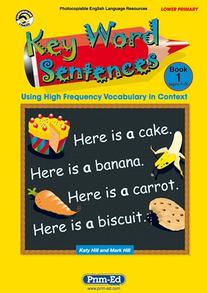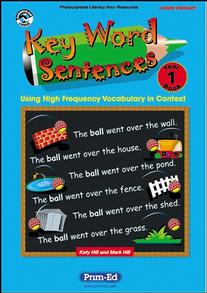-
0
Your cart is currently empty.
-
0
Your cart is currently empty.
English Phonics Worksheets & Resources
Phonics teaching resources are essential for children when they are learning to read. Phonics helps children learn the relationship between letters and the sounds they represent. This is an important step in reading development, as it lays the foundation for more complex skills.
There are a variety of phonics resources available, which can be used in different ways to support each child’s individual learning needs. By using phonics teaching resources, parents and teachers can help pupils learn to read with confidence.
Prim-Ed Publishing offers a wide variety of English phonics resources that will help your pupils learn all about phonemes, syllables and other phonics concepts. Resources cover topics including phonological awareness skills, reading, spelling, syllables, phonics, vowel sounds, and initial letters and sounds.
With our engaging and challenging games, worksheets and activities, your pupils will be on their way to becoming proficient readers in no time!
What is phonics?
Phonics is the relationship between written symbols and sounds. There are 26 letters in the English alphabet, and each letter has a corresponding sound. In the phonetic alphabet, there are 44 sounds, which are made up of consonants, vowels and digraphs.
Why learning phonics is important
Phonics is the foundation of reading and writing. It helps children learn to read by sounding out words. When children understand how sounds are related to letters, they can begin to read and write words.
Phonics is also important because it helps children understand the relationship between spoken and written language. By understanding phonics, children can learn to spell words correctly and pronounce them correctly.
Phonics skills are essential for reading and spelling. By learning phonics, children can start to read independently and they will be able to spell words correctly when they write.
Examples of phonics letters and sounds
There are 44 phonemes in the English language, which are made up of 24 consonants, 12 vowels and eight vowel digraphs (two-letter combinations that make one sound).
When children learn the different sounds of letters, they can start to read words. Blends are two or more letters that make a new sound, such as “bl” or "br". Digraphs are two letters that make one sound, such as "sh", "ch" and "th."
Trigraphs are three-letter combinations that produce a single sound. For example, 'ear' as in ‘year’ or 'tch' as in 'match'.
Phonics instruction usually begins with teaching the most common sound for each letter of the alphabet. Once children have learned these basic sounds, they can begin to blend them together to read the written word.
Teaching children phonics in the classroom
There are many different phonics programmes available and each has its own approach. Teaching children phonics in the classroom can be done in a variety of ways.
However, it is important to start with the basics and build up to more complex concepts.
Teacher programmes typically follow these steps:
- Introduce the sound(s) - this is usually done through stories or rhymes, which helps children hear the relationship between letters and sounds. Pupils should then have opportunities to explore the sound(s) through play.
- Teach the sound(s) - pupils should be taught how to identify the sound in a word. This can be done through games, activities and worksheets.
- Practise the sound(s) - pupils should be given opportunities to practise using the sound(s) in words. This can be done through reading and writing activities.
- Review the sound(s) - pupils should be given opportunities to review the sound(s) regularly. This can be done through games, activities and English worksheets.
Once children have mastered the basics, they can move on to more complex concepts such as consonant blends and digraphs.
Teacher phonics resources
Prim-Ed Publishing has many different phonics worksheets and resources available for teachers. Phonics resources for teachers include worksheets, workbooks, activities, games and software programs. These resources can help you teach phonics in an engaging and effective way.
Using a phonics chart is a great tool as it lists all of the English phonemes and their corresponding graphemes (letters or letter groups that represent those sounds).
- Wall charts like the Sounds in Focus: Teaching Charts can be a helpful reference for both teachers and pupils in the classroom.
- The Complete Phonic Handbook is an essential reference to support teachers in the classroom. The book is packed full of phonic word lists and activity suggestions to help children identify the different sound patterns in words.
There are many different resources and ways to teach phonics and what works best will depend on the needs of your pupils. Some popular phonics teaching methods include:
- Explicit instruction
- Modelled reading
- Shared reading
- Guided reading
- Independent reading
You can use a variety of methods and resources to teach phonics, including whole-class instruction, small-group work and one-on-one tutoring.
Phonics workbooks, activities and games
By learning the different types of phonics, children will be able to read, spell words correctly and expand their vocabulary.
One of the best ways for children to learn about phonics is by incorporating fun activities into your classroom lessons. Games can help children learn to read and write by providing them with repeated opportunities to practise and develop their phonics skills.
Resources that support the National Curriculum
Requirements for teaching phonics are part of the National Curriculum for English programmes of study. Phonics plays a large role in young pupils' language development, including reading, writing, spelling, comprehension and fluency in spoken English.
Learning phonics helps children understand how spoken language works and it gives them the ability they need to sound out words. Phonics is also a great way to build vocabulary, as it introduces new words and concepts.
Prim-Ed Publishing is devoted to helping teachers deliver engaging and effective phonics lessons. Our phonics worksheets and resources are designed to support the National Curriculum for England and can be used with pupils of all abilities. We have a wide range of materials available, from phonics games and activities to worksheets and assessments.
Whether you're teaching phonics for the first time or looking for new ways to challenge your pupils, we have the resources you need. Browse our latest products for your school, or contact us to find out more.
Frequently asked questions
How many phonics sounds are there?
There are 44 phonics sounds.
What is the first step in teaching phonics?
The first step is to teach pupils the letter names and their associated sounds. After that, you can begin teaching them simple words that contain those sounds. Once they have mastered those, you can start introducing more difficult words. Finally, you can move on to reading stories and texts.
How are the phonics sounds taught?
The order in which the phonics sounds are taught is not set in stone, but most programmes start with the easiest sounds first (s, a, t, i, p, n) and work towards the more difficult ones (j, v, r,s, th, and z).
Are there any other benefits to learning phonics?
Yes! In addition to improving reading and writing skills, phonics has the advantage of improving pupils' comprehension skills and phonemic awareness. It also has the benefit of encouraging children to decode new words, rather than just memorising them.
What are blending and segmenting in phonics?
Segmenting is when a child breaks a word down into its individual sounds; for example, c-a-t. Blending is when a child puts the sounds together to make a word; for example, s-n-o-w.
How can I support my child's learning at home?
If you want to support your child's learning at home, there are several things parents can do:
- Read with them every day.
- Help them sound out a word when they're reading aloud to you.
- Play phonics games together online or on an app.
- Encourage them to write down a word they want to learn how to spell.
